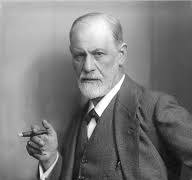By Prof. Levine & Dr. Salganik
Greetings to our readers,
In general, the concept of the unconscious has captured the hearts of researchers and clinicians for over a century, starting with early psychoanalytic theories and ending with modern neuroscience research.
Understanding the unconscious appears to be essential to understanding the full spectrum of human experience, including behaviors, thoughts, and feelings that operate below the conscious level.
In general, the concept of the unconscious includes different types, each of which is defined by different theoretical frameworks.
Below is a suggestion for several types of unconscious processes:
Dynamic subconscious: originated in Freudian psychoanalysis, and includes repressed impulses, desires, memories and conflicts.

Sigmund Shlomo Freud [1856-1939]
Collective Unconscious: Introduced by Carl Jung, this refers to shared and universal archetypes and symbols throughout humanity.

Carl Jung [1875-1961]
Cognitive unconscious: The cognitive psychology perspective, which includes automatic thoughts, implicit memories, and subliminal processing.
Procedural Unconscious: Related to procedural memory, mastery of skills and habits learned without conscious awareness.
Neural Subconscious: The neuroscience view that includes brain activities that occur without conscious awareness, such as those managed by the amygdala and basal ganglia.
Each type emphasizes different aspects and functions of unconscious processes in human cognition and behavior.
Read more »
By Prof. Levine & Dr. Salganik
Greetings to our readers,
Freud is described in the introduction to the book "Dr. Freud Biography" by Paul Ferris "as a man with raging passions, who grew up in a culture that suppresses passions and who strived with all his heart to understand those passions that drive him…. An obsessed genius, sometimes evil, sometimes generous, here and there also mischievous . and Ferris is convinced that, like other pioneering researchers, Freud more than once hitched the cart before the horse….to draw the conclusions that seemed right to him at a given moment."
Is that so?
This time we will discuss in detail the figures that accompanied Freud's life and influenced his personality and the psychoanalytic thought he created and which were internalized in his directory of internalized figures. We will also try to maintain the hierarchy of these images in his inner world.
We will also add that we used various sources including Encyclopedia Britannica, the entry on Freud's life and thought in Wikipedia and Erich Fromm's writings on Freud, among other sources. We will also note that due to the fact that we will show different angles, there will be several repetitions of the same significant figures, each time in a different context.
Brief Biography
Sigmund (Shlomo) Freud was born on May 6, 1856 to Ukrainian Jewish parents, Amalia and Jacob Freud, in Freiburg, Moravia, a small town that was then part of the Austrian Empire. In his early childhood, Freud and his family moved to Leipzig and then to Vienna. Freud was a brilliant student, studied literature, biology and medicine, and graduated with a medical degree from the University of Vienna in 1881.

Sigmund Shlomo Freud [1856-1939]
Freud read widely as a young student, and his later theories were likely influenced by scientists and scholars of his time, as well as prominent continental philosophers, such as Nietzsche and Schopenhauer. Freud was also a devoted reader of Shakespeare, whose literary influence is evident in many of Freud's works.
Read more »


 Prof. Joseph Levine, M.D. is an emeritus associate professor in the Division of Psychiatry, Faculty of Health Sciences, Ben Gurion University in Israel. Prof. Levine is a certified psychiatrist with clinical experience in controlled trials of adult psychiatric disorders and in psychotherapy. He was awarded a NRSAD independent investigator grant for the study of Creatine Monohydrate in psychiatric disorders -- mainly Schizophrenia. He resides and treats patients in Tel Aviv and all of central Israel.
Prof. Joseph Levine, M.D. is an emeritus associate professor in the Division of Psychiatry, Faculty of Health Sciences, Ben Gurion University in Israel. Prof. Levine is a certified psychiatrist with clinical experience in controlled trials of adult psychiatric disorders and in psychotherapy. He was awarded a NRSAD independent investigator grant for the study of Creatine Monohydrate in psychiatric disorders -- mainly Schizophrenia. He resides and treats patients in Tel Aviv and all of central Israel.
